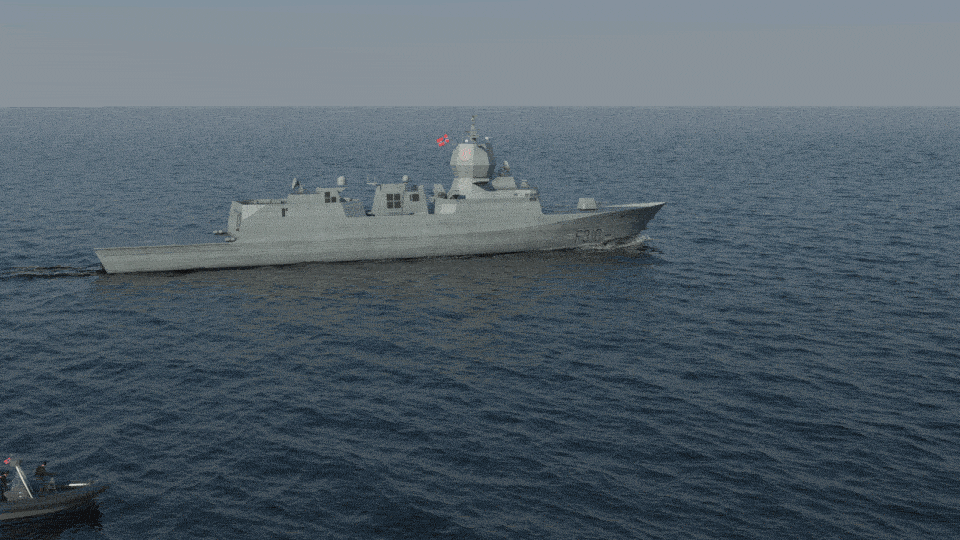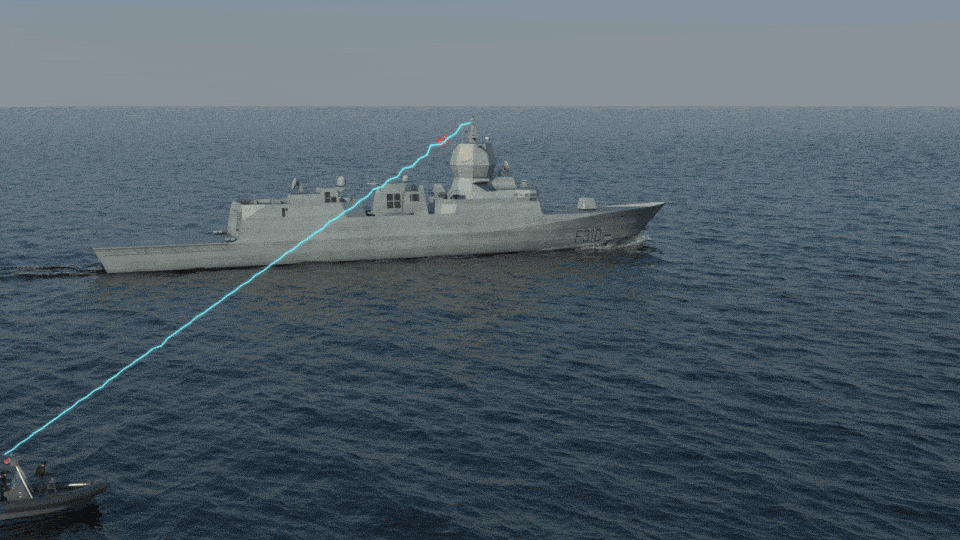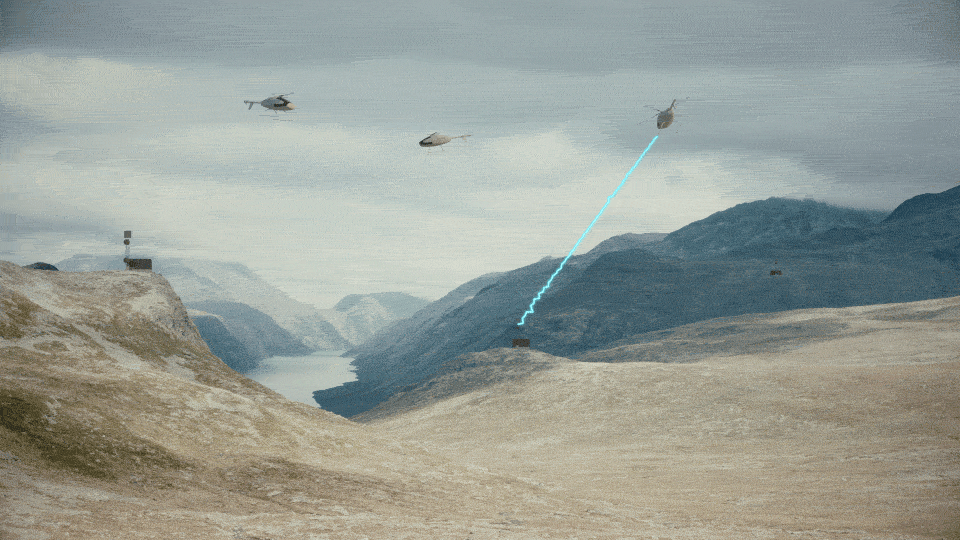Ultralong range Broadband Phased Array Radio
The Cordis Array II series is the next generation technology solution for point-to-multipoint tactical data links. The system forms a wireless IP connectivity between multiple points with an unmatched range and bandwidth.
Compared to conventional point-to-point systems, the Cordis Array II has an electronically steerable beam that constantly optimizes the direction of transmission and reception several thousand times pr second. The electronic steering involves no moving parts and enables the ultranarrow beam to be steered instantly in the direction to communicate with several fast moving objects. This enables a ultralong range tactical data link with a point-to-multipoint capability – together with high broadband capability. The Cordis Array II has best-in-class Electronic Warfare resilience.
The Cordis Array II unit is an integrated radio and antenna panel that provides IP network connectivity between the radio stations. The connection to the antenna is an Ethernet cable – the same type of interface used in all computers and networks. The IP based system makes it inter-operable with all other IP-based systems, and makes integration of systems through Cordis Array II data links easy and efficient.
Our advanced radios has no moving parts enabling high reliability and operational availability. This extremely robust design gives a low Life Cycle Cost.
Smart Radio Technology
Conventional tactical radio technology (Ex. MIMO)

The picture shows a conventional tactical radio technology where the radio waves propagate in all directions from the transmitter. This results in reduced operational range since most of the radio wave power is wasted in non-relevant directions. It also causes more interference for other radio systems operating on the same frequency, and makes the transmitter an easy target to locate and jam.
Conventional tracking antenna technology

The picture shows a conventional motorized tracking antenna system with a narrow antenna beam steered in the direction of interest. The narrow antenna beam focuses the energy in the direction of interest and increases the operational range. Because the beam is locked with a motorized system, it can only operate as a point-to-point link. The motorized tracking antenna has a limited rotation speed, and the problem will increase when tracking a fast moving unit like RIB, UAV and aircraft.
Cordis Array II radio technology

The picture shows the Cordis Array II technology where a narrow beam is being steered in the direction of interest with no moving parts. The antenna beam is electronically steered and can change direction so fast that it follows a fast-moving target. Even if the moving target exceeds the speed of sound, the Cordis Array II technology will be able to keep track.
Point-to-Multipoint Capability
Conventional motorized tracking antenna technology is only for point-to-point links where one ground station antenna provides a data link to a UAV. For each UAV there is one ground station antenna.
Conventional motorized ground tracking antenna

The picture shows a conventional motorized tracking antenna technology where one ground station antenna is required for each UAV.
The Cordis Array II technology with electronically steerable radios is able to change the direction of the antenna instantly. This unique feature enables a single ground antenna to operate several UAVs simultaneously. This point-to-multipoint functionality provides connectivity to all units in the network even if all units are moving.
Cordis Array II antenna technology

The picture shows the point-to-multipoint capability in the Cordis Array II radio where a single ground station can operate several UAVs. The ultranarrow antenna beam instantly moves in the direction of interest for communication and focuses the radio power to provide long-range links to all UAVs. The Cordis Array II radio can maintain link while on the move, pending line-of-sight.
Non-line-of-Sight Operation
Challenging applications that require link also in non-line-of-sight conditions will benefit from the high output power and sensitive reception system provided by the ultranarrow beam in the Cordis Array II technology.
The Cordis Array II technology can endure a very high propagation path and will be able to operate beyond line-of-sight with a performance exceeding conventional tactical radio systems.